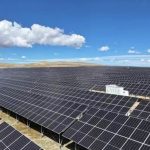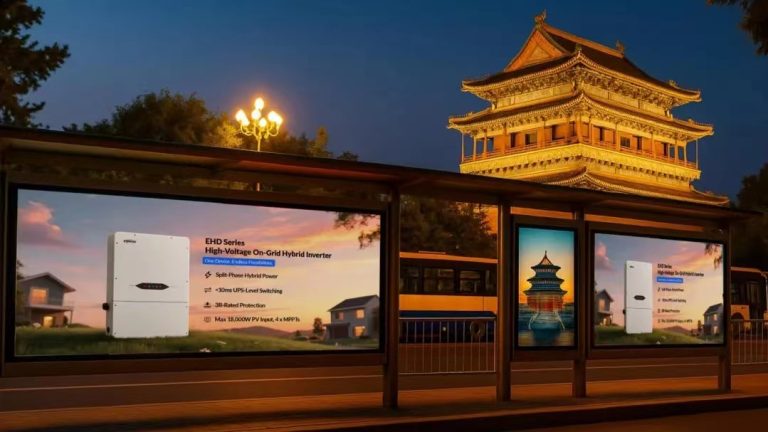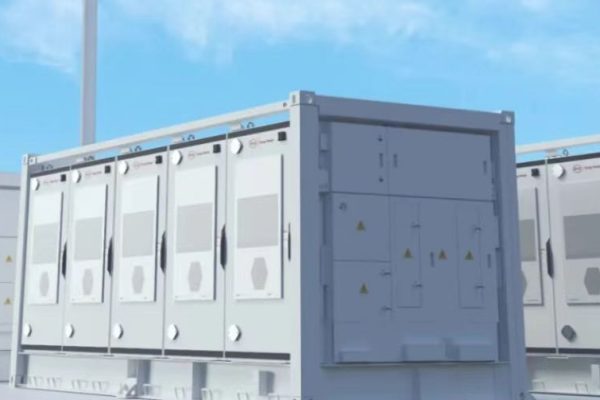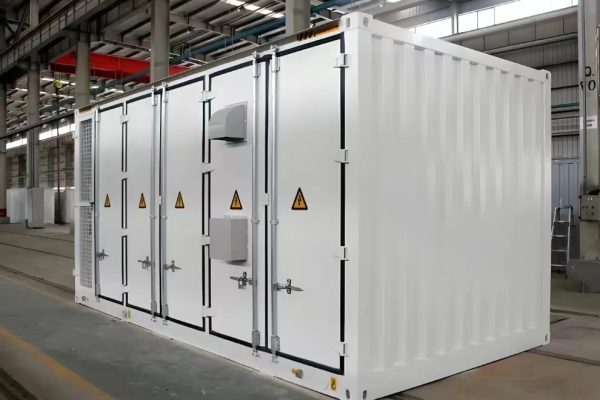Why It Matters for Energy Storage and Hybrid Solar Systems
Inverter specifications often list a parameter called THD — Total Harmonic Distortion. For many new installers or even seasoned professionals transitioning from residential PV to C&I storage systems, THD might seem like a secondary concern.
But in systems above 10kW — especially when powering motors, sensitive electronics, or off-grid loads — THD can impact efficiency, safety, and long-term reliability.
So, what is THD? Why should you care? And how can you select inverters with acceptable harmonic performance for your energy storage systems?
Let’s break it down.
⚡ What is THD?
Total Harmonic Distortion (THD) measures how much the waveform of a signal (usually voltage or current) deviates from a pure sine wave due to the presence of harmonics — frequencies that are multiples of the fundamental frequency (e.g., 50Hz or 60Hz).
In simpler terms:
THD tells you how “clean” the AC output is from an inverter.
🧮 How is THD Calculated?
For voltage: THDV=V22+V32+V42+⋯V1\text{THD}_\text{V} = \frac{\sqrt{V_2^2 + V_3^2 + V_4^2 + \cdots}}{V_1}THDV=V1V22+V32+V42+⋯
- V1V_1V1 = fundamental voltage (50Hz or 60Hz)
- V2,V3,…V_2, V_3, …V2,V3,… = harmonic components (100Hz, 150Hz, etc.)
THD is expressed as a percentage. Lower is better.
🎯 Typical THD Values (Voltage)
| Application | Acceptable THD |
|---|---|
| Utility Grid | < 5% (IEEE 519 standard) |
| Commercial Load Centers | < 3% preferred |
| Sensitive Equipment (labs, data centers) | < 2% recommended |
| Off-grid Solar Inverter (low cost) | Often 4–8% |
| High-end Hybrid Inverter | < 2% |
| True Sine Wave Inverter | < 1.5% |
🧠 Why Does THD Matter in Storage + Inverter Systems?
In hybrid or off-grid systems, especially above 10kW and/or powering inductive or sensitive loads, high THD can cause real problems:
🔌 1. Equipment Malfunction or Overheating
- Motors (e.g., water pumps) may buzz, vibrate, or overheat.
- UPS systems may reject “dirty power” from high-THD sources.
- LED lighting may flicker or fail prematurely.
⚠️ 2. Increased I²R Losses and Heat
- Harmonics raise RMS current → more cable/busbar heating.
- Transformers and inductors run hotter → reduced lifespan.
📉 3. Reduced System Efficiency
- Inverters and connected equipment operate less efficiently.
- Reactive power increases → poor power factor → lower energy throughput.
💡 4. Compliance Issues
- Grid-connected systems may fail to meet THD limits set by utilities or local regulators (e.g., IEEE 519, IEC 61000).
- Non-compliant systems may be disconnected or refused permits.
🔍 THD and Inverter Quality: What to Look For
When evaluating an inverter — especially for C&I storage, microgrids, or sensitive off-grid loads — pay attention to the THD rating on the spec sheet.
| Label | Meaning |
|---|---|
| THD <3% | Acceptable for general commercial loads |
| THD <2% | Safe for most industrial/motor-driven systems |
| THD <1.5% | Excellent — suitable for lab, medical, or telecom use |
| THD <1% | Premium-level — ideal for grid-forming or mission-critical systems |
✅ Tip: Choose true sine wave or PWM-controlled inverters with low THD for ESS or hybrid systems. Avoid modified sine wave inverters for anything above 3kW.
🏗 How to Reduce THD in Your System Design
If you’re already committed to a higher-THD inverter or working in challenging environments, consider the following strategies:
✅ Use Passive or Active Filters
Install harmonic filters on inverter output or between inverter and load.
✅ Avoid Oversizing Inverter vs Load
Lightly loaded inverters tend to show worse THD. Match your inverter rating closely to actual usage.
✅ Use Quality Cables and Busbars
Poor grounding or undersized wiring can amplify harmonic effects. Follow clean layout rules.
✅ Balance Loads Across Phases
Unbalanced phases can distort waveform quality and raise system THD.
🌎 Standards and Compliance
Different countries follow slightly different THD limits:
| Standard | Region | Max THD Voltage |
|---|---|---|
| IEEE 519 | USA, LATAM | 5% |
| IEC 61000-3-2 | EU | 5–8% depending on category |
| GB/T 14549 | China | 5% |
| AS/NZS 61000 | Australia/NZ | <3% preferred for critical loads |
For off-grid or weak grid environments, lower THD helps stabilize local voltage and reduce nuisance tripping.
📦 What Should Exporters and Integrators Do?
If you are exporting ESS or hybrid systems to Africa, Southeast Asia, or LATAM, where the grid is unstable or absent, you should:
- ✅ Choose inverters with THD <3% as a general rule
- ✅ For telecom, pumps, clinics, or government buildings, target THD <2%
- ✅ Mention low-THD output in marketing to differentiate from competitors
- ✅ Include THD verification in your commissioning checklist (with clamp meters or oscilloscopes)
Clean Power = Reliable Power
THD is not just an abstract technical value. In real-world energy storage systems — especially off-grid and hybrid installations — total harmonic distortion directly affects performance, reliability, and customer satisfaction.
By understanding and controlling THD, you’ll:
- Deliver more stable, compatible power
- Reduce maintenance and client complaints
- Improve long-term system value and brand trust









